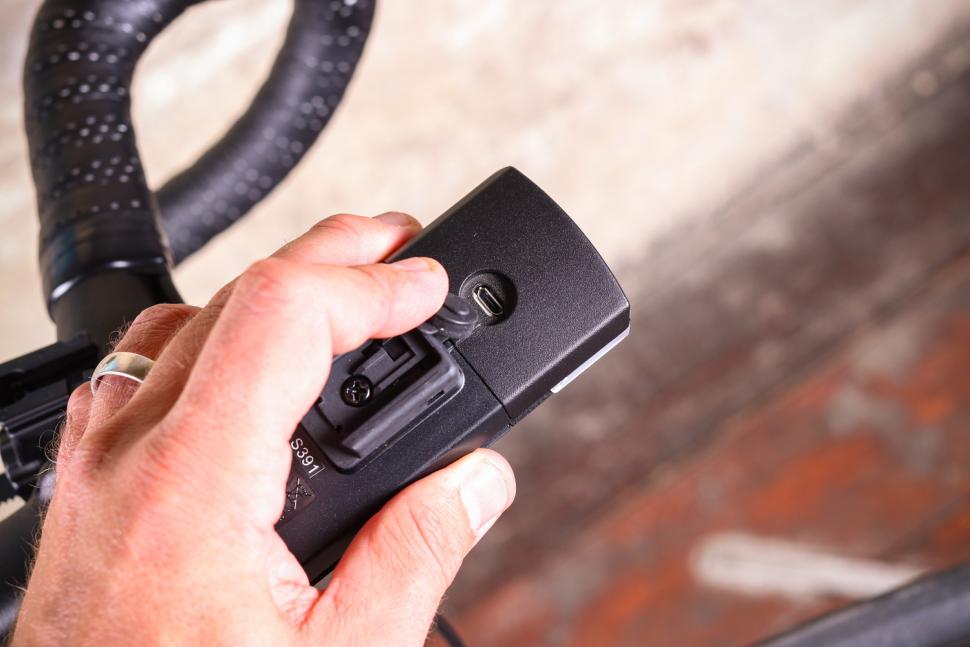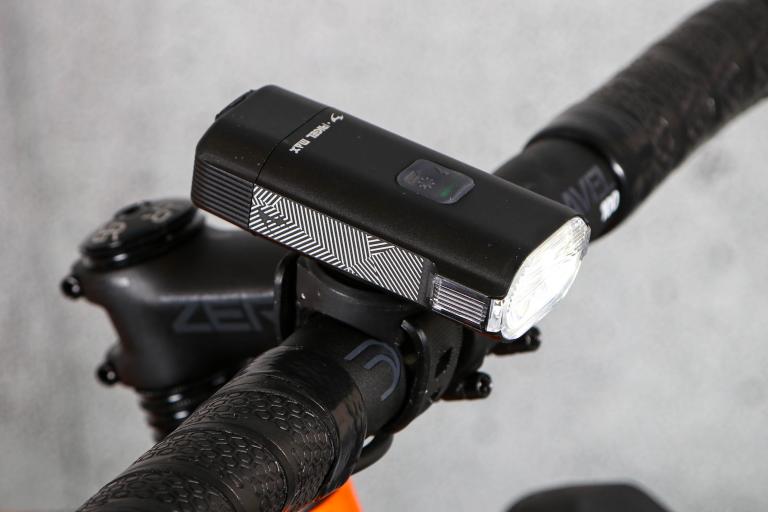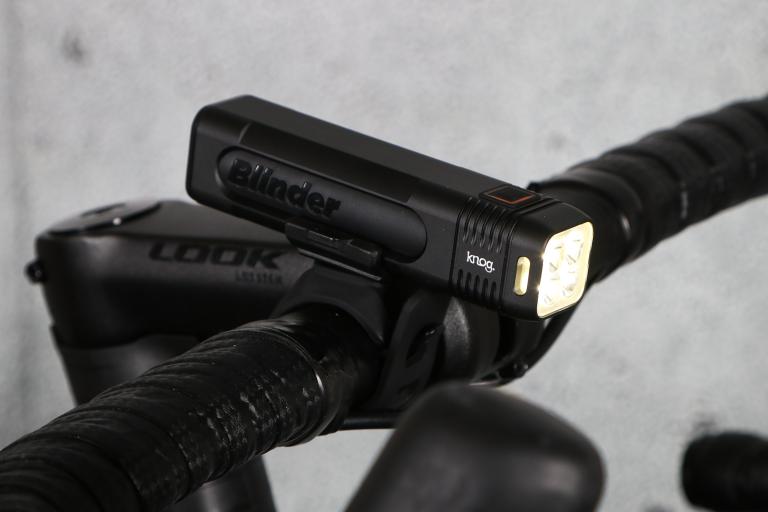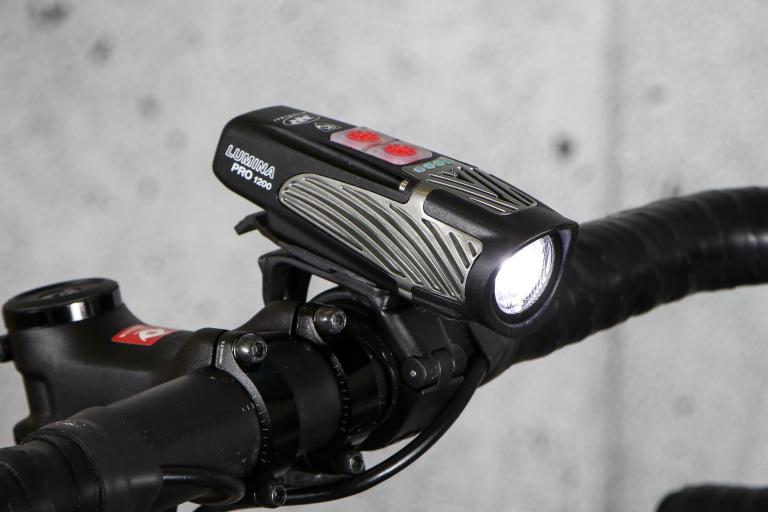- News
- Reviews
- Bikes
- Components
- Bar tape & grips
- Bottom brackets
- Brake & gear cables
- Brake & STI levers
- Brake pads & spares
- Brakes
- Cassettes & freewheels
- Chains
- Chainsets & chainrings
- Derailleurs - front
- Derailleurs - rear
- Forks
- Gear levers & shifters
- Groupsets
- Handlebars & extensions
- Headsets
- Hubs
- Inner tubes
- Pedals
- Quick releases & skewers
- Saddles
- Seatposts
- Stems
- Wheels
- Tyres
- Tubeless valves
- Accessories
- Accessories - misc
- Computer mounts
- Bags
- Bar ends
- Bike bags & cases
- Bottle cages
- Bottles
- Cameras
- Car racks
- Child seats
- Computers
- Glasses
- GPS units
- Helmets
- Lights - front
- Lights - rear
- Lights - sets
- Locks
- Mirrors
- Mudguards
- Racks
- Pumps & CO2 inflators
- Puncture kits
- Reflectives
- Smart watches
- Stands and racks
- Trailers
- Clothing
- Health, fitness and nutrition
- Tools and workshop
- Miscellaneous
- Buyers Guides
- Features
- Forum
- Recommends
- Podcast
review
£109.99
VERDICT:
Good beam pattern and solid design, but short battery life and a bit pricey against rivals
Weight:
203g
Contact:
At road.cc every product is thoroughly tested for as long as it takes to get a proper insight into how well it works. Our reviewers are experienced cyclists that we trust to be objective. While we strive to ensure that opinions expressed are backed up by facts, reviews are by their nature an informed opinion, not a definitive verdict. We don't intentionally try to break anything (except locks) but we do try to look for weak points in any design. The overall score is not just an average of the other scores: it reflects both a product's function and value – with value determined by how a product compares with items of similar spec, quality, and price.
What the road.cc scores meanGood scores are more common than bad, because fortunately good products are more common than bad.
- Exceptional
- Excellent
- Very Good
- Good
- Quite good
- Average
- Not so good
- Poor
- Bad
- Appalling
Cateye has been in the bike lighting game a long time and the AMPP 1100 is one of its latest additions, a 1,100-lumen light that has a decent wide beam pattern, is solidly made and is simple to use. It's not the cheapest, though, and others delivery better battery life.
- Pros: Nice wide, white beam; secure bracket
- Cons: Short battery life makes planning routes necessary
While I was testing the AMPP 1100, George was out and about getting to grips with the AMPP 800 and the points he made about it in his review here pretty much sum up my thoughts about the AMPP 1100, you just have a bit more light to chuck about.
> Find your nearest dealer here
First, I like the beam pattern. It's not necessarily that road-specific but it is wider and flatter than many, with less of a spotlight in the centre.
Angled down slightly it's unobtrusive to oncoming motorists if you're sensible with the mode settings, and illuminates a large spread of road in front of you, picking up the verges and drains in your peripherals. It has a bright white colour to the beam as well, which gives great clarity.
Two LEDs are used to achieve this pattern and Cateye's OptiCube lens technology, and its design also allows a decent amount of side illumination. How much it stands out when your arms are shielding it on the hoods is another matter, but it's better than nothing.
Cateye has kept things simple with just three solid modes and two flashing.
The solid modes are High (1,100 lumen/1.5hrs), Middle (800 lumen/2hrs) and Low (400 lumen/4.5hrs).
Those are pretty good outputs, but the battery life isn't exactly market leading. Take the Moon Meteor Storm Dual Front Light I've just finished reviewing: using both LEDs for 1,300 lumens it would run for 2hrs, and one LED at 800 lumens would achieve 3hrs. That's an hour longer than the Cateye delivers in its Middle mode at the same 800 lumens. It's not like the Moon has a massive battery or anything, as the weight difference between the two is just 4g.
> Buyer's Guide: The best 2019/2020 front lights for cycling
On the road I rarely needed to go above 800 lumens on the back lanes, and 400 lumens on the main roads, so I could stretch the battery life out a fair bit.
The AMPP 1100's flashing modes are a daytime flash which keeps the LEDs on at 400 lumens permanently with a 1,100-lumen pulse, which will certainly get you noticed. It'll knock that out 6.5hrs, while the standard 200-lumen night flash will last for 50hrs.
Changing between the modes just requires a click of the power button but Cateye has done that naughty thing where if you are in Low and want to go back to Middle you have to scroll through the two disco modes to get there. Something that frustrates me something chronic when it comes to light design!
The only saving grace is that if you are in any mode you can double click to jump to High mode, and when you give it another click to return to your previous mode. With this in mind it is possible to use Low as a dipped beam and High as your full beam without having to scroll through the flashing modes or use the Middle and High modes.
The power button (it's a press and hold jobby to turn the light on/off, by the way) is also a battery indicator. Blue means above 50%, yellow 30-50% and red at less than 30%. Cateye claims that it can be charged/discharged 300 times before the rated capacity drops to 70%, which doesn't sound too bad. Even the most hardened commuter should get a good few years out of it.
The Cateye stuck pretty close to its quoted burn times, and a full recharge is quick enough at just over 3hrs via the mains or about 5hrs from a PC, it all depends really on the output.
The charge point is at the bottom of the light, hidden behind a rubber cover which does a good job of keeping out the elements. Plenty of wet rides saw no issues and even a blast from the power shower saw no water ingress. The cover is a snug fit, too, so there is no worry of it vibrating open.
In fact, the Cateye is a quality bit of kit throughout. It uses aluminium alloy in its construction, unlike many other brands which incorporate a bit of plastic. If you drop this or crash, you won't do much damage.
The bracket is tried and tested. Its design has been used for years on Cateye's lights and it works, keeping the light securely in position on even the roughest of roads. Attaching and removing the light is just a button push away so it takes seconds.
Value
This new AMPP 1100 has an rrp of £109.99 which in the grand scheme isn't a massive output for a light of this quality. That Moon Meteor I mentioned up the top, though, is just £89.99. Twenty quid less but with an extra 200 lumens and much longer battery life. Plus it gets a remote control and a helmet mount.
The AMPP 1100 is the same price as the Knog PWR Trail front light which has 1,000 lumens as its max output. It does convert into a power bank, though, and you can adjust beam patterns and modes by using the Knog app.
Overall, the AMPP 1100 is a well built light and it's easy to use. The downsides are that its price/performance ratio is a little off and that is tough to swallow against some of the opposition.
Verdict
Good beam pattern and solid design, but short battery life and a bit pricey against rivals
road.cc test report
Make and model: Cateye AMPP 1100 front light
Size tested: 1100 Lumens
Tell us what the light is for, and who it's aimed at. What do the manufacturers say about it? How does that compare to your own feelings about it?
Cateye says, "AMPP1100 uses a twin-LED design with OptiCube™ lens technology, spreading a wide and even beam across whatever the terrain throws at you."
Tell us some more about the technical aspects of the light?
Cateye lists:
High power rechargeable headlight (1100 lm)
Powerful wide beam with OptiCube™ lens technology
Excellent side visibility
Large capacity lithium-ion rechargeable battery
Built-in fast recharging circuit *Full charge in approx 3 hours (minimum)
3-level battery indicator (Blue: Above 50% Yellow: 30-50% Red: Less than 30%)
USB rechargeable (Micro-USB cable included)
Mode memory function
Five light modes (High / Middle / Low / Daytime HyperConstant / Flashing)
Turns on High mode with double-click of power button
FlexTight™ bracket
Helmet mount and center fork bracket (optional)
Rate the light for quality of construction:
8/10
Rate the light for design and ease of use. How simple was the light to use?
8/10
Rate the light for the design and usability of the clamping system/s
9/10
Rate the light for waterproofing. How did it stand up to the elements?
9/10
Rate the light for battery life. How long did it last? How long did it take to recharge?
7/10
Other companies are delivering longer burn times but the Cateye did achieve what was quoted in both length and recharge time.
Rate the light for performance:
7/10
Rate the light for durability:
8/10
Rate the light for weight:
8/10
Rate the light for value:
5/10
Tell us how the light performed overall when used for its designed purpose
If you are riding for less than two hours at a time it offers good performance from its LEDs.
Tell us what you particularly liked about the light
A really good beam spread.
Tell us what you particularly disliked about the light
Shortish run times.
How does the price compare to that of similar products in the market, including ones recently tested on road.cc?
There are a lot of lights like the Moon I've mentioned or brands like ETC which are offering more power and longer running times for the money.
Did you enjoy using the light? Yes
Would you consider buying the light? No, not without a decent discount.
Would you recommend the light to a friend? I'd mention it along with others.
Use this box to explain your overall score
A decent all-round package but it just doesn't quite hit the mark against the cheaper/more powerful competition.
About the tester
Age: 41
I usually ride: This month's test bike My best bike is: B'Twin Ultra CF draped in the latest bling test components
I've been riding for: Over 20 years I ride: Every day I would class myself as: Expert
I regularly do the following types of riding: time trialling, commuting, club rides, sportives, fixed/singlespeed
Since writing his first bike review for road.cc back in early 2009 senior product reviewer Stu has tested more than a thousand pieces of kit, and hundreds of bikes.
With an HND in mechanical engineering and previous roles as a CNC programmer/machinist, draughtsman and development engineer (working in new product design) Stu understands what it takes to bring a product to market. A mix of that knowledge combined with his love of road and gravel cycling puts him in the ideal position to put the latest kit through its paces.
He first made the switch to road cycling in 1999, primarily for fitness, but it didn’t take long for his competitive side to take over which led to around ten years as a time triallist and some pretty decent results. These days though riding is more about escapism, keeping the weight off and just enjoying the fact that he gets to ride the latest technology as part of his day job.
Latest Comments
- David9694 3 sec ago
Car smashes into wall near Exeter Cathedral...
- David9694 9 min 52 sec ago
Driver Who Broke Runner's Spine in Three Places Praised for Waiting Around Until Help Arrived
- Steve K 46 min 47 sec ago
Even if this gets to 100,000 signatures, I suspect the Petitions Committee will simply say there has already been a debate, so no need for another...
- Born_peddling 8 hours 43 min ago
Muddyfox tour 100's I've wide & flat feet plus there's the optional choice of using cleats with them...
- Prosper0 8 hours 37 min ago
Just doing the Lord's work in case anyone's interested in this product. This Mucoff Pump is a £100 rebrand of an £85 Rockbros rebrand of a £60...
- mdavidford 9 hours 26 min ago
Obviously it means 'springing out of the bunch' on a critical sector. Or maybe it's referring to the time of year.
- David9694 10 hours 14 min ago
Woman taken to hospital after flipping car onto roof in Trowbridge...
- A V Lowe 10 hours 57 min ago
Its blindingly obvious from the image that the DKE of the buses include the mirrors which extend to nearly reach the edge of the tarmac pavement on...
- Sredlums 11 hours 30 min ago
It's sad when being very good at your job - any job - isn't enough to earn a decent living. It shouldn't be that way....













Add new comment
3 comments
The thing never properly tested in light reviews is the connection between light and bracket (I don't mean the connection of the bracket to the bike). I've lost a couple of Nite Rider Solas that flew off when I went over a bump because the connection was poor. So I've gone for a Knog Blinder Quad at the back now and that's been fine so far
At the front I've had a couple of Cat Eyes where the little plastic clip holding the light in the bracket snapped off. Fortunately you can get in touch with the distributor (zyrofisher) and they'll send a spare. But it's a faff. I'd have thought twice if I'd have known
I think it'd be helpful if Road spent a bit of time on that as well as the other stuff.
Another over valued review, 3.5 stars when for the downsides at this price level this should barely get two stars!
That may be true, but the trouble is people aren't sensible with the mode settings, and they don't angle these sorts of lights down slightly. They angle them for maximum effect, and they use the highest mode that will last them of the duration of their commute. Not everyone, but a sizeable proportion of people are either too dumb to think about whether they might be blinding people, or just don't give a shit.